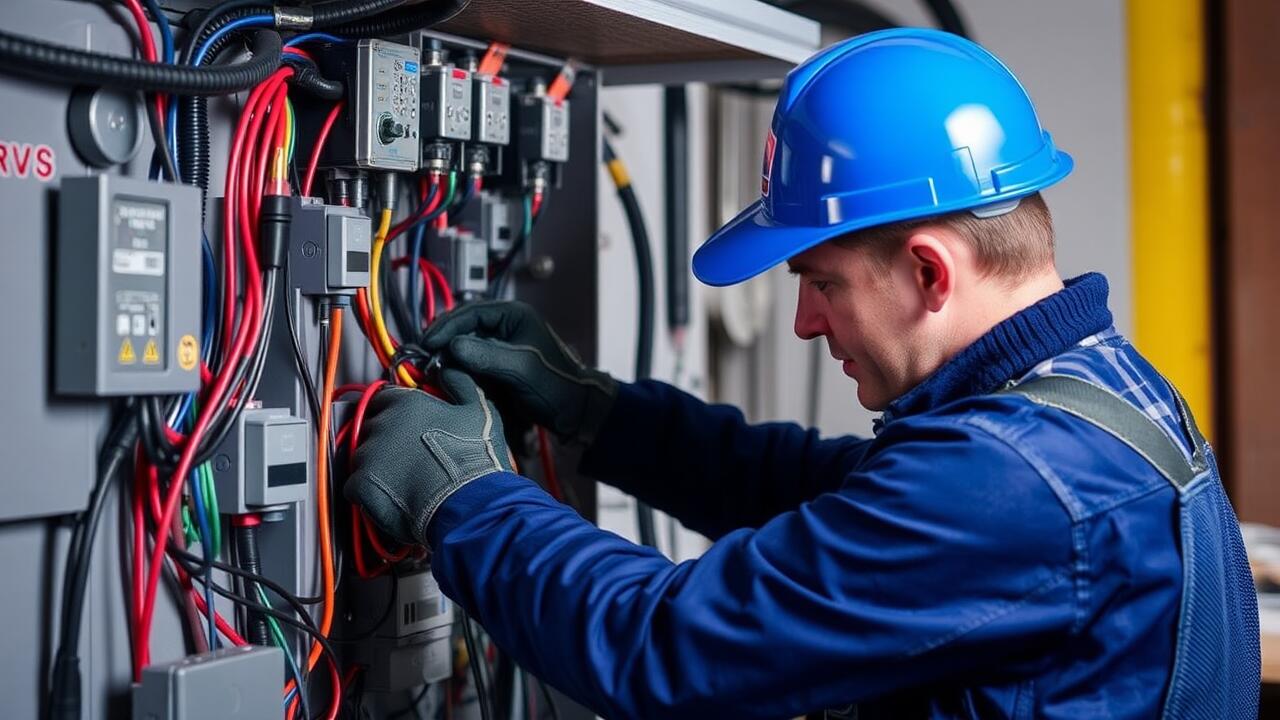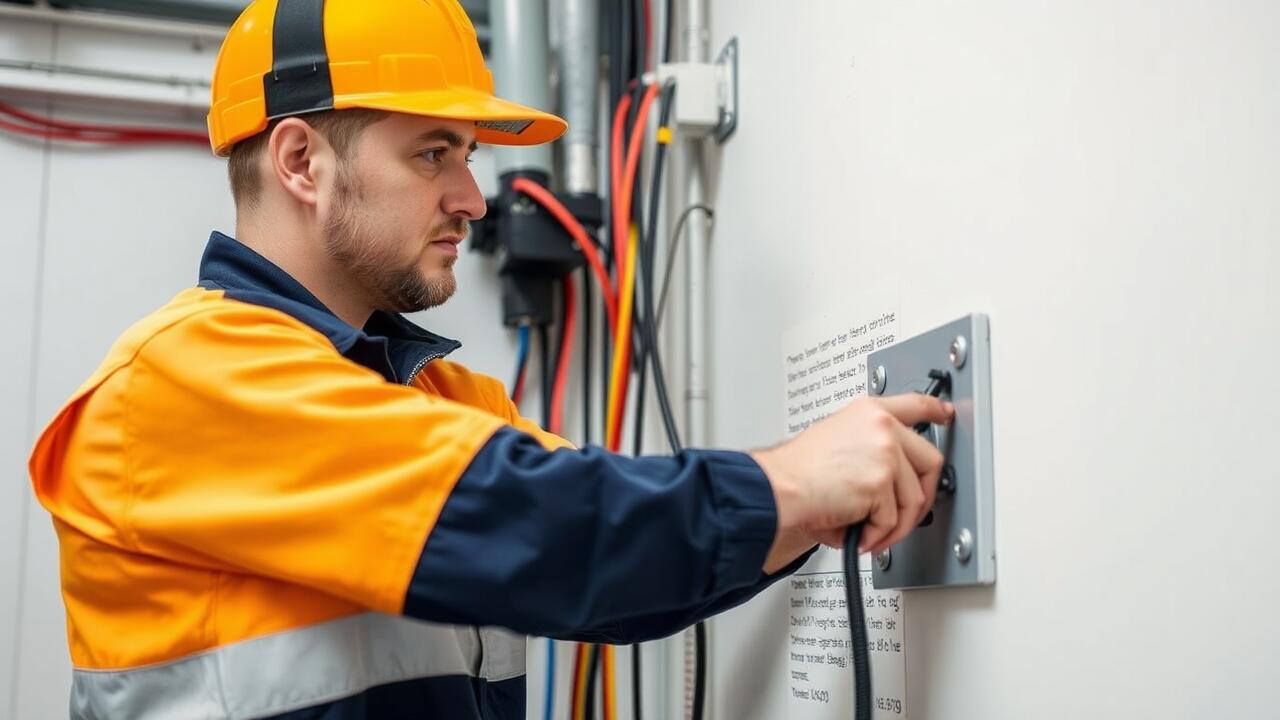
Testing with a Multimeter
To effectively troubleshoot a dead outlet, using a multimeter is one of the most reliable methods. This device measures voltage, current, and resistance, enabling you to determine whether electricity is reaching the outlet. Begin by setting the multimeter to the AC voltage setting, and insert the probes into the outlet slots. A reading of around 120 volts indicates that the outlet is operational; if the reading is significantly lower or shows zero, it points to an issue either with the outlet itself or the associated wiring.
If you find that the outlet is indeed dead, it may be time to investigate further. Check for any tripped circuit breakers or blown fuses that might have caused the power interruption. Should these steps fail to resolve the issue, you may need to consider professional help for more complex problems. Searching online for "Electrical Repairs near me" can connect you with qualified electricians who can diagnose and fix the problem safely and efficiently.
Step-by-Step Guide for Using a Multimeter
Using a multimeter can help you diagnose a dead outlet effectively. Start by gathering your tools, including a multimeter set to measure AC voltage. Insert the multimeter probes into the outlet slots, ensuring you maintain a safe grip on the multimeter. A reading of around 120 volts typically indicates the outlet is functioning correctly. If the reading is significantly lower or absent, a deeper investigation is necessary.
Next, it is essential to check for any visible wiring issues around the outlet. If you find loose or frayed wires, they could be the culprit behind the dead outlet. Before attempting any repairs, remember to cut power to the outlet at the circuit breaker to ensure safety. After troubleshooting, if you still encounter issues, consider searching for "Electrical Repairs near me" for professional assistance.
Identifying Wiring Issues
Wiring issues can often be the culprit behind dead outlets in your home. Loose connections or frayed wires can result in disrupted power flow, leading to malfunctioning electrical outlets. Inspecting the wiring in your walls, outlets, and circuit boxes is crucial in identifying these problems. Be cautious when accessing these areas, ensuring you follow safety protocols. Proper identification of wiring issues is essential for effective resolution.
If you're not comfortable investigating these wiring problems on your own, seeking professional help is advisable. Many homeowners benefit from searching for "Electrical Repairs near me" to find experienced technicians. These experts can assess the situation more thoroughly and perform necessary repairs, helping to restore functionality to your outlets efficiently and safely. Ignoring wiring issues can lead to more significant problems, so taking action is crucial.
Recognizing Loose or Frayed Wires
Loose or frayed wires are common culprits when it comes to dead outlets in your home. Inspecting the wiring connected to your outlets is crucial. Look for any visible damage such as cuts, abrasions, or signs of wear. If you notice any wires that appear to be compromised, it may indicate a greater problem that requires immediate attention. Recognizing these issues early can prevent further damage and ensure your electrical system remains safe.
When dealing with electrical repairs, it's important to consider professional assistance. Searching “Electrical Repairs near me” can connect you with local experts who can properly diagnose and fix wiring problems. A trained electrician can assess whether the issue lies within the outlet itself or if there’s a larger wiring problem throughout your home. Addressing loose or frayed wires quickly can help restore power and enhance your home’s safety.
Investigating Other Electrical Systems
If you find that a dead outlet is not an isolated problem, it may be necessary to explore other electrical systems in your home. Begin by checking adjacent outlets and circuit breakers for signs of issues. This could indicate a larger problem within the circuit or a fault in the electrical panel itself. Pay attention to any flickering lights or other irregular behavior in nearby outlets as these can be indicative of underlying issues.
In situations where you’ve ruled out basic problems, you might need professional assistance. Enlisting the help of a licensed electrician can ensure that your home’s electrical systems are safe and functional. Searching for "Electrical Repairs near me" can help you find qualified professionals who can conduct a thorough inspection and address any potential risks efficiently.
Determining if the Issue is Isolated
To determine if a dead outlet issue is isolated to that specific location or part of a larger problem, start by checking other outlets in the same room or adjacent rooms. If multiple outlets are unresponsive, this could indicate a tripped circuit breaker or an issue impacting the entire circuit. Ensure that you check the circuit breakers in your home for any tripped switches and reset them as needed. If the outlet functions after a reset, the issue may have been a temporary overload.
If the outlet remains unresponsive despite checking the breakers, inspecting the electrical load on that circuit is crucial. Connect certain appliances or devices and note if the problem recurs. This can help reveal whether the outlet consistently fails under load or if it is simply a malfunctioning point in your electrical system. Should the issue persist, or if you suspect wiring problems, consider seeking professional assistance. Searching for "Electrical Repairs near me" can lead you to qualified electricians who can diagnose and repair potential issues efficiently.
FAQS
What is the first step I should take when I find a dead outlet?
The first step is to check if the outlet is receiving power by using a multimeter or a simple plug-in device, like a lamp. If it’s still non-functional, proceed to further investigation.
How do I use a multimeter to test an outlet?
Set the multimeter to the AC voltage setting, insert the probes into the outlet slots (one in the hot slot and one in the neutral), and check the reading. A typical reading should be around 120 volts in North America.
What are common signs of wiring issues in outlets?
Common signs include flickering lights, outlets that feel warm to the touch, or visible damage such as frayed wires or burn marks around the outlet.
How can I tell if the electrical issue is isolated to one outlet?
To determine if the issue is isolated, check other outlets in the same room or circuit. If multiple outlets are dead, there may be a larger issue with the circuit breaker or wiring.
Is it safe to troubleshoot electrical issues in my home?
While minor troubleshooting can be safe, it’s crucial to turn off power at the circuit breaker before inspecting outlets or wiring. For significant issues, or if you're unsure, it’s best to consult a licensed electrician.




